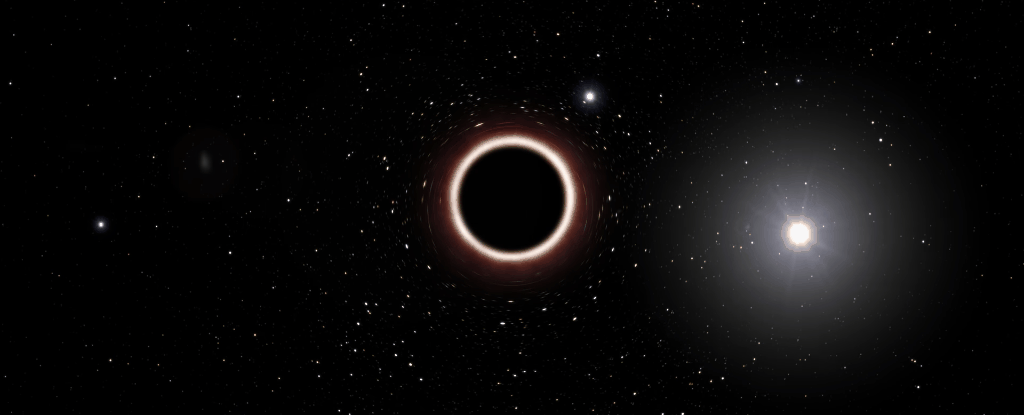It's a
stunning scientific result, obtained through amazing technology, careful
mathematics and diligent observation.
“This is the second time that we have observed the close passage of S2 around the black hole in our galactic centre. But this time, because of much improved instrumentation, we were able to observe the star with unprecedented resolution,” said astrophysicist Reinhard Genzel of the Max Planck Institute for Extraterrestrial Physics (MPE). “We have been preparing intensely for this event over several years, as we wanted to make the most of this unique opportunity to observe general relativistic effects.”
The Very
Large Telescope array uses a laser guide star and four connected, infrared
telescopes to astronomers can pierce the turbulent core of our galaxy and study
the supermassive black hole that lurks there.
There are
three of these S-stars (not to be confused with S-type stars) in close orbit
around Sgr A*, which has a mass roughly equivalent to 4 million Suns. S2 (or
S0-2), in its elliptical orbit, is one of two stars that gets the closest to
the black hole at pericentre.
It comes
within just 17 light-hours from the centre of the galaxy, roughly four times
the distance between the Sun and Neptune. That sounds like a long way to us,
but when you're dealing with something that has the gravitational pull of a supermassive
black hole, it's pretty danged close. The effect of Sgr A* is so strong it
speeds the star up to around 25 million kilometres per hour (15.5 million mph)
- almost 3 percent of the speed of light.
When S2 is
that close, according to relativity, the gravitational effect of the black hole
should stretch the light of the star into longer wavelengths, towards the red
end of the electromagnetic spectrum. This is a well-known phenomenon called
gravitational redshifting.
Observing it
around Sgr A* is no mean feat, however. For a start, it's 26,000 light-years
away. In addition, the region is shrouded in a thick cloud of dust, which makes
visible light observations impossible. The research team used a number of
instruments on the European Southern Observatory's Very Large Telescope to
watch the star's pericentre. SINFONI, GRAVITY and NACO all have infrared and
near-infrared sensors, which can penetrate the dust to pick up infrared
sources.
Using these
instruments, the research team measured the velocity and mapped the orbit of S2
as it swung around Sgr A* and they got the result they expected. The new
measurements very clearly reveal the redshift, the first direct detection ever
to do so near a supermassive black hole, proving, once again, Einstein's theory
of general relativity.
“Our first observations of S2 with GRAVITY, about two years ago, already showed that we would have the ideal black hole laboratory,” said astrophysicist Frank Eisenhauer of MPE and the principal investigator of GRAVITY and the SINFONI spectrograph. “During the close passage, we could even detect the faint glow around the black hole on most of the images, which allowed us to precisely follow the star on its orbit, ultimately leading to the detection of the gravitational redshift in the spectrum of S2.”
It's the
latest in a long and impressive line of tests that have proven relativity, time
and again. Recently, a three-body star system, an entire galaxy bending space
and the discovery of gravitational waves have all demonstrated physics
beautifully in line with Einstein's 100-year-old theory.
So why do
scientists keep testing it? Because if there are circumstances under which it
breaks, that will mark a profound change in the way we understand the Universe,
resulting in a need for a new form of physics and if relativity is going to
break, it's most likely going to do so only under absolutely extreme
conditions.
“Here in the Solar System we can only test the laws of physics now and under certain circumstances,” said astrophysicists Françoise Delplancke of the ESO. “So it's very important in astronomy to also check that those laws are still valid where the gravitational fields are very much stronger.”
And
relativity is continuing to kick arse. The team's research has been published
in the journal Astronomy & Astrophysics.



Post A Comment:
0 comments: